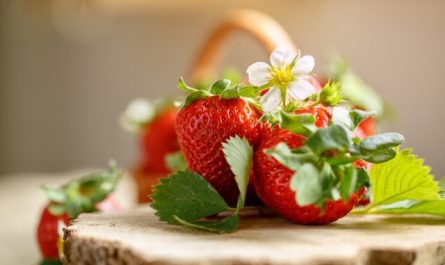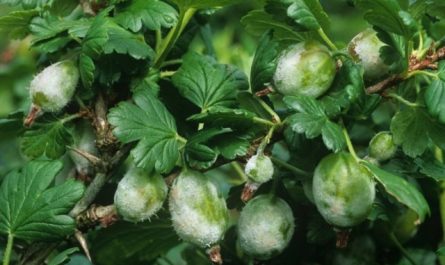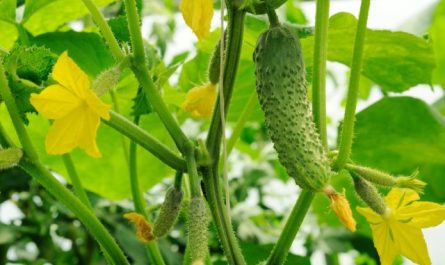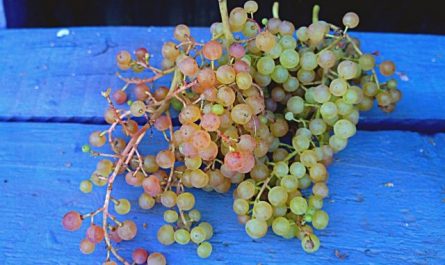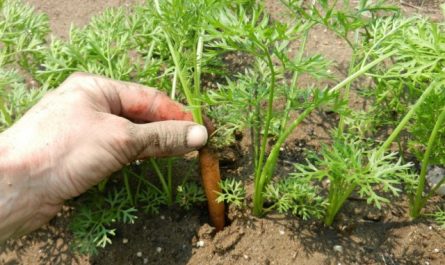Probably the main sign of April in most parts of the country is the breaking up of rivers from ice. This is a powerful, spectacular, touching process on streams, and majestic on large rivers, after which it immediately becomes clear: well, spring has come! Unfortunately, for most gardeners April is such a busy month that they often simply do not have time to admire the all-crushing power of awakening water. Nature wakes up and is in a hurry to live. Gardeners have too much to do. This article will be about what and where not to forget to do.

About seedlings
In April, most seedlings move to greenhouses or hotbeds. In the southern regions – at the beginning of April, in the more northern ones – at the end. It seems that having got rid of all this lush greenery and continuous watering, picking, additional lighting, rearranging from place to place, you can finally relax and clean up!
Gardeners are incredibly happy about this moment, but not for long. After a day or two, the fate of the planted seedlings no longer seems as rosy as before. Questions begin to torment them: will it freeze or not; will it burn or not?
For peace of mind, it is advisable to stock up on additional covering and shading materials in advance. After all, our forecasts for 5 days are quite realistic. And it is better to additionally cover the seedlings with breathable covering materials during a cold snap – it will definitely not be worse! By the way, covering material will also save you from excessive heat in the greenhouse. And it will protect you from light stress: there was no such insolation at home.
In most parts of the country, in April, you can plant different types of cabbage in a greenhouse or hotbed for seedlings. In the south, it is already planted in the ground.
For those who didn’t have time in March, it’s not too late to plant annual flowers for seedlings: carnations, stocks, marigolds, nasturtiums, purslane, ageratum and others – whatever you like.
In April, in the south – at the beginning of the month, in the middle zone and in Siberia – at the end of the month, you can sow cucumbers, pumpkins, squash, watermelons and melons for seedlings. Living in the Khabarovsk Territory, we tried to plant pumpkin seedlings in the last week of the month so that they had time to germinate and get stronger under the hot radiators of the central heating.
For those who were too early to germinate tubers, bulbs and rhizomes in March, April is the right time. We inspect gladioli, cannas, callas, dahlias, potatoes and sweet potatoes, treat them if necessary and germinate them. We also grow what we bought but it is too early to plant at home or in a greenhouse.
Well, it’s time to bring the plants that were stored in the basement all winter into the light. They are usually already awake. The optimal place for them is a shady place with a temperature of about 10 degrees.

April work in the garden beds
Preparing the beds
Spring is spring, but frosts in April are quite normal. Those who couldn’t get to the beds in March can do the soil warming-freezing procedure in April to destroy annual weeds.
Preparing the beds is one of the main April concerns. If the beds are fenced, you need to check the fence itself and the fastening, and repair it if necessary.
It is time to form the beds that are made on the plowed area. The soil needs to “settle” so as not to injure or disorient the plant roots during the settling process.
What to sow in the ground in April?
Those who have prepared beds can sow radishes, lettuce, greens and plant garlic and onions. Greens and radishes are good to plant several times, once a decade, for fresh consumption.
Carrots, parsley, and parsnips can be sown almost everywhere. These crops are cold-resistant and slow-witted; early sowing will free up time in the hotter season.
It is also time to sow perennials in the ground: mint, lemon balm, catnip, sage, oregano, hyssop, marjoram, perennial onions of all kinds. It is better to plant mint, lemon balm and catnip separately, in an isolated and fenced place – they spread very much.
April is the best time for green manure. Right after the snow melts, it is a good idea to scatter phacelia or mustard seeds over the beds, roll them lightly – let them grow and suppress weeds. By the time the seedlings are planted, the mulch and green manure will be ready. Uncut green manure can initially serve as shelter from the sun and wind for freshly planted seedlings.
Caring for garden strawberries
Strawberry beds are treated in early spring, but they vary significantly depending on the region and the gardener’s views. Where they are covered, they need to be uncovered on a cloudy, quiet day and given a week to breathe and get used to it. Then it’s up to you: some trim dry leaves in the spring, some cut them in the fall, some don’t cut them at all, but rake them up in the spring. A bed of strawberries sitting on black covering material can simply be swept…
And you need to feed it. Again, depending on the owner’s beliefs: you can sprinkle ash, or feed it with mineral water. And drain off excess water if for some reason it appeared in the strawberry zone.
Here in Kuban, on clay soil, garden and wild strawberries grow best on a slope, surviving both heat and drought, while on a raised bed in a hollow in the spring, less than half of the bushes remain.
It is a good idea to make one bed with early strawberries super early – install arches, cover with film. The same goes for beds with perennial and annual greens.
Potato
In the southern regions of the country, it is time to plant potatoes. In the more northern regions, they are still sprouting.

Gardening chores
Well, in April, all the gardens will have thawed for sure. Because where there is still snow, there are usually no gardens. In places where fruit trees are in a covered culture, on a cloudy, quiet day, the cover must be removed so that the trees can breathe and get used to it. Whitewashing must be done almost immediately, because the unexpected sun can damage the bark. And if you are going to work on the tree, you can immediately do spring sanitary pruning – cut out dry, broken branches, as well as those directed inward of the crown and the lower, heavily shaded ones.
Uncover the bushes too, give them a chance to straighten up. Cut off any visible damage. Treat those that have already been uncovered and cut off from pests. If the currants were sick with powdery mildew, spray with Fitosporin.
In those regions where pruning, processing of trunks and installation of trapping belts are a thing of the past, it is necessary to prepare for flowering. Supporters of chemical control spray the garden with insecticides and fungicides. Organists set up light traps, plant trunk circles with useful plants and spray with soap-ash-phytoncide solutions.
Grapes require special care, in most parts of the country this crop requires special care and is grown in a covered culture. The order of actions is slightly different: open for a day or two for ventilation, then in cloudy weather remove the cover, let it get used to it for a week, then fix it on a support. You can cut it in the spring, but it “cries” a lot, so it depends on the situation and compassion.
Planting the things bought in April is, on the one hand, a balm for the gardener’s soul – look how much there is! But on the other hand, there is a lot of additional work (planting holes, fertile soil mixed with sand or peat or something else, pruning, tying, whitewashing) and most importantly – where to plant all this?! But here you have to somehow get out of it.
By the way, the sun is bright in spring, temperature differences can be large and it would be a good idea to protect young seedlings. We have found protection with thin covering material. We make a hut, open on the north side and the seedling gets used to the new place for a couple of weeks without unnecessary stress.
In April, it is not too late to graft trees with cuttings if you want to add variety to the fruit part of the garden, if there is no more space for new plantings.
And it’s not too late to install birdhouses and titmice houses!

Caring for an ornamental garden
In April, all decorative plants packed for the winter are also finally uncovered. Again, on a quiet, cloudy day – don’t scare the plants with the sun right away, let them get used to the fact that there is light at all. When they get used to it – open, trim, and process.
Ornamental shrubs that are not pruned in March require shaping, not all of them, of course, but only those that bloom in summer and autumn. Spring-flowering shrubs are pruned after flowering.
A common mistake gardeners make in April is the desire to tidy up their plot as quickly as possible: cut off dry stems of ornamental plants, rake up leaves, clear the ground. No need to rush! April, with all its springtime certainty, can also unexpectedly throw up frosts. Especially with such a strange forecast issued by the Hydrometeorological Center.
Young sprouts unexpectedly exposed to the sun, wind and temperature changes can suffer. Especially if they, like lilies, bear flower buds at the top. Although frostbitten or sunburnt leaves do not add decorativeness to any plant.
But the lawn needs to be cleaned, old grass needs to be raked up, reseeded in bald spots, let it be repaired. Moreover, you can reseed a blooming (for example, Moorish) lawn on a single-color green lawn – it will be an exclusive design.
April usually pleases with the blooming of primroses in the central zone, but this year, according to a strange forecast, it will probably please in the north of the European part and in Western Siberia. Our primroses in Kuban, due to the abnormally warm (+26 degrees!) beginning of spring, began to bloom in unison in early March and were hit by frosts of up to -7°C that followed the warming. We had to cover the hyacinths, they look very unpresentable after the frost. The daffodils fell, but came to their senses, recovered, rose and did not lose their decorative qualities.
Decorative plantings of newly acquired plants require special care: grown, sprouted ones can be placed in a greenhouse before planting in the ground, but do not forget about shading. As soon as the air temperature allows, plant in a permanent place and cover from the sun and wind for a week or a week and a half, depending on the weather.
It is advisable to mark all plantings in the garden somehow. I think many have encountered a situation when, when planting a new plant, something planted earlier is dug up, cut and trampled. There are many different labels on sale now, you can choose the right ones. If you have the desire, free children and a creative streak, it is good to make markers yourself. The main requirement is that they should be noticeable. In our case, in conditions of grass growing wildly from April to October and a still young garden, these are tall “flags” of bright neon colors. Otherwise, something can be damaged when mowing.

Dear gardeners! I would recommend taking photos of your garden at different stages. Not only in bloom. Photos will show how the garden looks at different times and how it can be improved. For example, how to shape the crown of a tree or bush – this is more visible when leafless. In early spring, panoramic photos will show where water stagnates, what plants look like after winter: if the same ones are planted in different corners of the garden, you can compare. Take photos and put them in separate folders by year. It really helps.

